Are you dreaming of swimming with colorful tropical fish, exploring vibrant coral reefs, or diving into crystal-clear waters? The Philippines is your perfect destination! With its stunning underwater world and rich marine biodiversity, this tropical paradise offers some of the best snorkeling and diving experiences in the world (Lonely Planet – Philippines).
In this comprehensive guide, we’ll explore the most incredible spots for underwater adventures in the Philippines, from beginner-friendly snorkeling sites to world-class diving destinations.
Key Takeaways:
- The Philippines is home to over 7,600 islands with diverse marine ecosystems
- Best diving season is from November to May
- Options available for all skill levels, from beginners to advanced divers
- Famous for rare marine life sightings and coral preservation
- Affordable diving courses and equipment rental options
Why the Philippines is a Diver’s Paradise
As an avid diver with over a decade of experience exploring various underwater ecosystems worldwide, I can confidently say that the Philippines stands out. Nestled in the heart of the Coral Triangle, it’s a treasure trove of marine biodiversity (Coral Triangle Initiative). With over 7,600 islands to explore, there’s no shortage of stunning underwater adventures.
One of the first things I noticed is the crystal-clear waters. The visibility here is incredible, allowing me to fully appreciate the vibrant coral reefs and the colorful marine life swimming around. I’ve seen everything from tiny clownfish to majestic sea turtles, all thriving in these rich ecosystems.
The tropical climate means it’s perfect for diving year-round. Whether I’m looking to escape the winter chill or soak up the sun in summer, the waters are always inviting. And here’s a fun fact: the Philippines is home to 76% of the world’s known coral species! This diversity means every dive feels like a unique experience, with something new to discover.
What’s also great is how accessible diving is in the Philippines. There are dive sites for all levels, whether you’re just starting or looking for advanced challenges. Many local dive shops offer affordable packages, making it easy to dive without breaking the bank.
In short, the Philippines is a diver’s paradise thanks to its beautiful waters, rich marine life, and welcoming dive communities. I can’t wait to share my favorite snorkeling and diving spots with you!
Top 5 Must-Visit Snorkeling Spots
1. Moalboal, Cebu
If you’re eager to swim with millions of sardines, then Moalboal is a must-visit. The famous sardine run is a breathtaking spectacle that you won’t want to miss. Here, you’ll also find vibrant coral gardens and the chance to spot sea turtles, all with easy shore access. Trust me, gliding through schools of fish in these crystal-clear waters is an experience like no other! For more information on local tours, visit Moalboal Tourism.
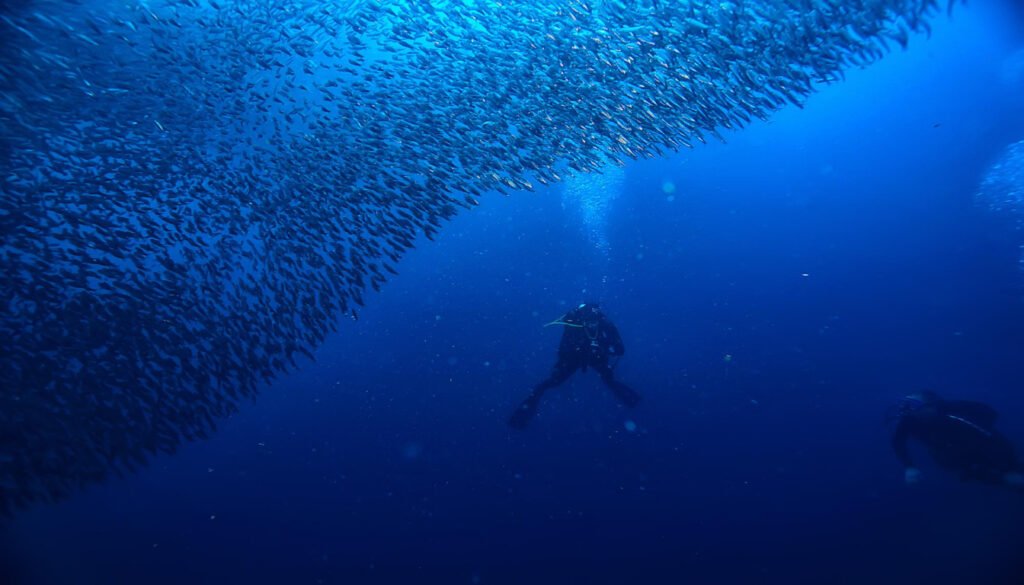
2. Coron, Palawan
Coron is where history meets marine wonder. With its WWII shipwrecks, you’ll not only get to snorkel but also explore sites rich in history. The crystal-clear lagoons are perfect for underwater photography, and the diverse marine biodiversity ensures that every dive is a new adventure. Explore more about Coron’s history and attractions at Coron Tourism.
3. El Nido, Palawan
El Nido’s stunning limestone cliffs conceal amazing snorkeling spots, perfect for beginners. The protected marine sanctuaries and shallow coral gardens are not just beautiful; they’re teeming with life. Swimming in these pristine waters feels like being in a dream, especially when you’re surrounded by colorful fish and serene lagoons.
4. Apo Island, Negros Oriental
Apo Island is famous for its friendly sea turtles. Here, you can experience regular encounters with these gentle creatures in their natural habitat. The healthy coral reefs and strong conservation efforts in the area make it a top choice for day trips. Plus, there’s nothing quite like watching turtles glide gracefully beneath the waves!
5. Balicasag Island, Bohol
For pristine coral gardens, head to Balicasag Island. The drop-offs here are teeming with marine life, making it a great spot for those looking to see sea turtles and vibrant coral formations. Its clear visibility year-round and easy access from Panglao make it an ideal destination for snorkelers of all levels.
Best Diving Destinations for Every Level
Whether you’re just starting your underwater journey or looking to tackle the open sea, the Philippines has something for everyone. Here are my top picks for diving destinations tailored to your skill level.
For Beginners:
Anilao, Batangas
If you’re new to diving, Anilao is the perfect spot. Located just a couple of hours from Manila, it’s easily accessible and boasts calm waters ideal for learning. Here, you’ll find:
- Diverse Marine Life: Anilao is known for its macro photography, making it a fantastic place to spot tiny creatures like nudibranchs and seahorses.
- Plenty of Dive Schools: With numerous diving schools around, you’ll have no trouble finding a place to get certified or join a guided dive.
- Beautiful Coral Gardens: The vibrant coral reefs here are simply stunning and provide a wonderful backdrop for your first dives.
For Intermediate Divers:
Puerto Galera, Mindoro
Once you’ve got a bit of experience under your belt, Puerto Galera should be on your radar. This lively destination offers:
- Diverse Dive Sites: From colorful coral gardens to thrilling drift dives, there’s plenty to explore.
- Strong Currents: These can be challenging but are also rewarding, providing chances to see bigger marine life like reef sharks.
- Vibrant Nightlife: After a day of diving, unwind at local bars and restaurants, making it a perfect mix of adventure and relaxation.
For Advanced Divers:
Tubbataha Reefs
If you’re an experienced diver seeking the ultimate challenge, Tubbataha Reefs is a must-visit. This UNESCO World Heritage site features:
- Unmatched Biodiversity: Expect to see everything from hammerhead sharks to manta rays in these pristine waters.
- Liveaboard Trips Only: Accessing Tubbataha requires a liveaboard, making it an adventure in itself. You’ll spend days diving in some of the most beautiful and remote spots.
- Epic Diving Conditions: The strong currents and deep waters offer an exhilarating experience for those ready to take on the challenge.
Each of these destinations offers a unique diving experience that caters to your skill level. Remember to choose the right spot based on your comfort and confidence in the water. With so many incredible places to explore, the Philippines is truly a diving paradise for everyone!
Famous for Rare Marine Life Sightings and Coral Preservation
One of the most thrilling aspects of exploring the underwater world in the Philippines is the chance to encounter some of the rarest marine life on the planet. As I glide through the warm waters, I’m often amazed by the sheer diversity of species that call these reefs home. From the majestic whale sharks in Donsol to the elusive thresher sharks at Malapascua, every dive feels like a new adventure.
The Philippines is also home to vibrant coral reefs, teeming with life. These reefs are not only beautiful but vital to the ecosystem. Sadly, coral reefs worldwide are facing threats from climate change, pollution, and overfishing. Fortunately, many regions in the Philippines have dedicated efforts to preserve these underwater wonders. For instance, places like Apo Island have become models for successful marine conservation, showing how local communities can protect their natural resources. Learn more about marine conservation efforts at Marine Conservation Society.
Essential Tips for Your Underwater Adventure
- Choose Eco-Friendly Operators: Support dive shops and tours that prioritize environmental conservation. They often follow sustainable practices that protect marine life.
- Follow the “Look, Don’t Touch” Rule: While it might be tempting to touch the corals or marine creatures, doing so can cause harm. Remember, these ecosystems are delicate and need our respect.
- Use Reef-Safe Sunscreen: Regular sunscreens can contain chemicals harmful to marine life. Opt for reef-safe options to help protect these beautiful environments.
- Be Mindful of Your Fin Kicks: When snorkeling or diving, avoid kicking up sediment or accidentally bumping into corals. Try to maintain a horizontal position in the water to minimize your impact.
- Stay Hydrated and Eat Well: Before your adventure, drink plenty of water and enjoy a nutritious meal. This will help you feel your best underwater and ensure you can fully enjoy your experience.
- Log Your Dives: Keeping a dive log is not just for tracking your progress; it helps you remember the incredible sights you’ve seen and the unique experiences you’ve had.
- Respect Wildlife: Keep a safe distance from marine life. While swimming with animals like sea turtles is a magical experience, it’s essential to let them move freely without disturbance.
For eco-friendly practices in diving, visit Ocean Conservancy.
Best Time to Visit
When it comes to visiting the beaches in the Philippines, timing can make all the difference in your experience. The best time to plan your trip largely depends on what you’re hoping to do. Personally, I find the peak season from November to May to be ideal for beach adventures. During these months, the weather is typically dry, the skies are clear, and you’ll enjoy the best visibility for snorkeling and diving.
In peak season, you can expect calm seas that make it perfect for swimming and exploring. However, this does come with a catch: prices tend to be higher, and accommodations can fill up quickly. If you’re planning a trip during these months, I recommend booking your stays and tours in advance to snag the best deals.
If you’re looking to save a bit of money and avoid the crowds, consider visiting during the off-peak season from June to October. While you might encounter some occasional rain, you can also take advantage of lower prices and a more relaxed atmosphere at the beaches. Just keep in mind that rough seas can occur during this time, which might affect your snorkeling and diving plans.
I’ve visited during both seasons, and while each has its perks, I often lean towards the peak months for the most reliable weather and stunning underwater visibility. No matter when you decide to go, make sure to check the local weather forecasts and sea conditions to ensure a safe and enjoyable experience.
Cost Guide for 2024
Planning a trip to the beautiful beaches of the Philippines? Knowing what to expect in terms of costs can help you budget wisely and make the most of your underwater adventures. Here’s a friendly breakdown of what you might spend for snorkeling and diving experiences in 2024.
Snorkeling:
- Equipment Rental: Expect to pay around $5 to $10 per day for a good-quality mask and snorkel. Some places might charge a bit more, but you can usually find budget-friendly options.
- Group Tours: Joining a group tour can be a great way to explore, with prices ranging from $20 to $40 per day. These tours typically include guided snorkeling, equipment, and sometimes refreshments.
- Private Tours: If you’re looking for a more personalized experience, private tours usually cost between $50 and $100 per day. You get a dedicated guide, which can make for a more relaxed and tailored adventure.
Diving:
- Discovery Dive: For those who want to try diving without any prior certification, a discovery dive typically costs around $50 to $70. This usually includes equipment rental and a short briefing.
- PADI Certification: If you’re ready to get certified, expect to invest between $300 and $500 for a PADI course, which is well worth it for the skills you’ll gain and the underwater experiences ahead.
- Fun Dives: Once you’re certified, fun dives will cost about $30 to $50 per dive, and this usually includes equipment rental.
- Liveaboard Trips: For the ultimate diving experience, consider a liveaboard trip, which can range from $200 to $400 per day. This is an amazing way to access remote dive sites and spend several days out on the water.
Budgeting Tips:
- Plan Ahead: Costs can vary significantly depending on the season, so booking your tours in advance can help you secure better prices, especially during peak season from November to May.
- Look for Packages: Many dive shops offer package deals that can save you money if you plan to do multiple dives or activities.
- Keep an Eye on Gear: If you plan to snorkel or dive frequently, consider investing in your own gear. This can be a more economical choice in the long run.
Marine Life You Can Expect to See
When you dive or snorkel in the Philippines, you’re not just exploring the water—you’re stepping into a vibrant, living world full of incredible creatures. One of the best parts of this adventure is the diverse marine life that calls these waters home. Here’s a sneak peek at what you can expect to encounter:
- Whale Sharks: If you’re lucky enough to visit during the right season, you might spot the gentle giants of the ocean. These magnificent creatures often gather in places like Donsol or Oslob, and swimming alongside them is a breathtaking experience.
- Sea Turtles: Everywhere you go, there’s a good chance you’ll meet these friendly reptiles. I’ve had moments snorkeling with hawksbill and green turtles, gliding gracefully through the water. They often hang out around coral reefs, and seeing them up close is truly magical.
- Thresher Sharks: For those who are more adventurous, the waters around Malapascua Island are famous for thresher shark sightings. Early morning dives here can lead to heart-pounding encounters with these sleek hunters.
- Manta Rays: If you venture to spots like Tubbataha or Apo Island, keep an eye out for manta rays. These majestic creatures can be spotted gliding elegantly through the water, adding a touch of grace to your dive.
- Colorful Nudibranchs: These tiny sea slugs are like living works of art! With their vibrant colors and unique shapes, nudibranchs can be found all over the reefs. They’re not just beautiful; they’re also a great subject for underwater photography!
- Diverse Coral Species: The coral reefs here are teeming with life. You’ll see everything from brain corals to staghorn corals, all providing essential habitats for countless fish species. The reefs are not just stunning; they’re vital to the marine ecosystem.
- Schools of Tropical Fish: Get ready for a rainbow of colors! The reefs are bustling with schools of clownfish, angelfish, and damselfish. It’s a thrill to swim among them, watching them dart in and out of the coral.
As you explore these underwater wonders, remember to treat the marine life with respect. Keep your distance from sensitive species, avoid touching the corals, and use reef-safe sunscreen. Each dive and snorkeling session is a chance to connect with nature, so let’s cherish and protect this stunning marine paradise!
Pro Tips for the Best Experience
When it comes to snorkeling and diving in the Philippines, a few insider tips can make all the difference in your experience. Here’s what I’ve learned from my adventures:
For Snorkelers:
- arly Bird Advantage: Head out in the early morning. The waters are calmer, and visibility is usually at its best. Plus, you’ll enjoy the peacefulness before the crowds arrive.
- Go Reef-Safe: Protect the beautiful reefs by choosing reef-safe sunscreen. Not only is it better for the environment, but it’s also a good way to show respect for the stunning marine life.
- Practice Makes Perfect: If you’re new to snorkeling, start in shallow waters. Get comfortable with your gear and techniques before heading out to deeper spots.
- Listen to Your Guide: Always follow your guide’s instructions. They know the waters and can help keep you safe while ensuring you have the best experience.
- Capture the Moments: Bring an underwater camera or a GoPro to capture your adventures. The vibrant colors of the marine life are worth documenting!
For Divers:
- Book Ahead: Dive shops can fill up quickly, especially during peak season. I recommend booking your dives in advance to secure your spot and ensure you get the best experiences.
- Log Your Dives: Keep a logbook of your dives. It’s not just great for tracking your progress; it also helps you remember the amazing experiences you had.
- Stay Hydrated: Diving can be dehydrating, so drink plenty of water before and after your dives. It’ll help keep you feeling your best.
- Plan Surface Intervals: Take your time between dives to allow your body to off-gas nitrogen. This makes your dives safer and helps you enjoy the whole day.
- Use a Diving Computer: If you’re serious about diving, consider investing in a diving computer. It helps you track your depth and time underwater, ensuring a safer experience.
Conclusion
The Philippines offers an incredible underwater world waiting to be explored. Whether you’re a first-time snorkeler or an experienced diver, you’ll find perfect spots for your adventure level. With proper planning and respect for marine life, you’re guaranteed an unforgettable experience in one of the world’s best diving destinations.
Ready to plan your underwater adventure? Remember to check current conditions and book with reputable operators. The amazing marine life of the Philippines awaits!
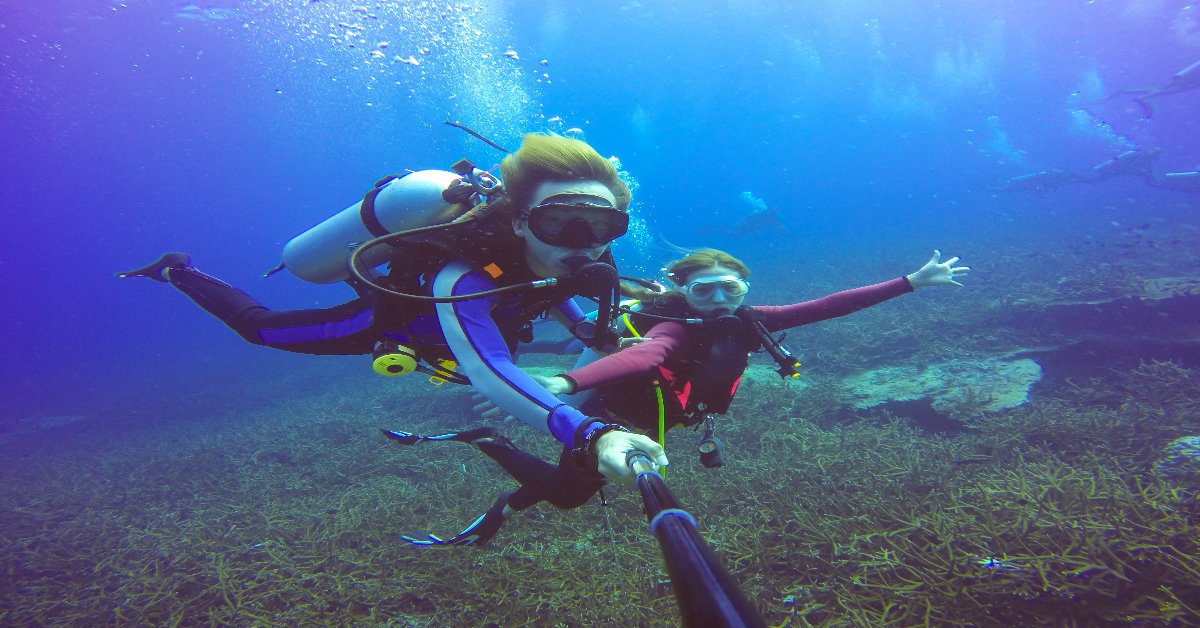
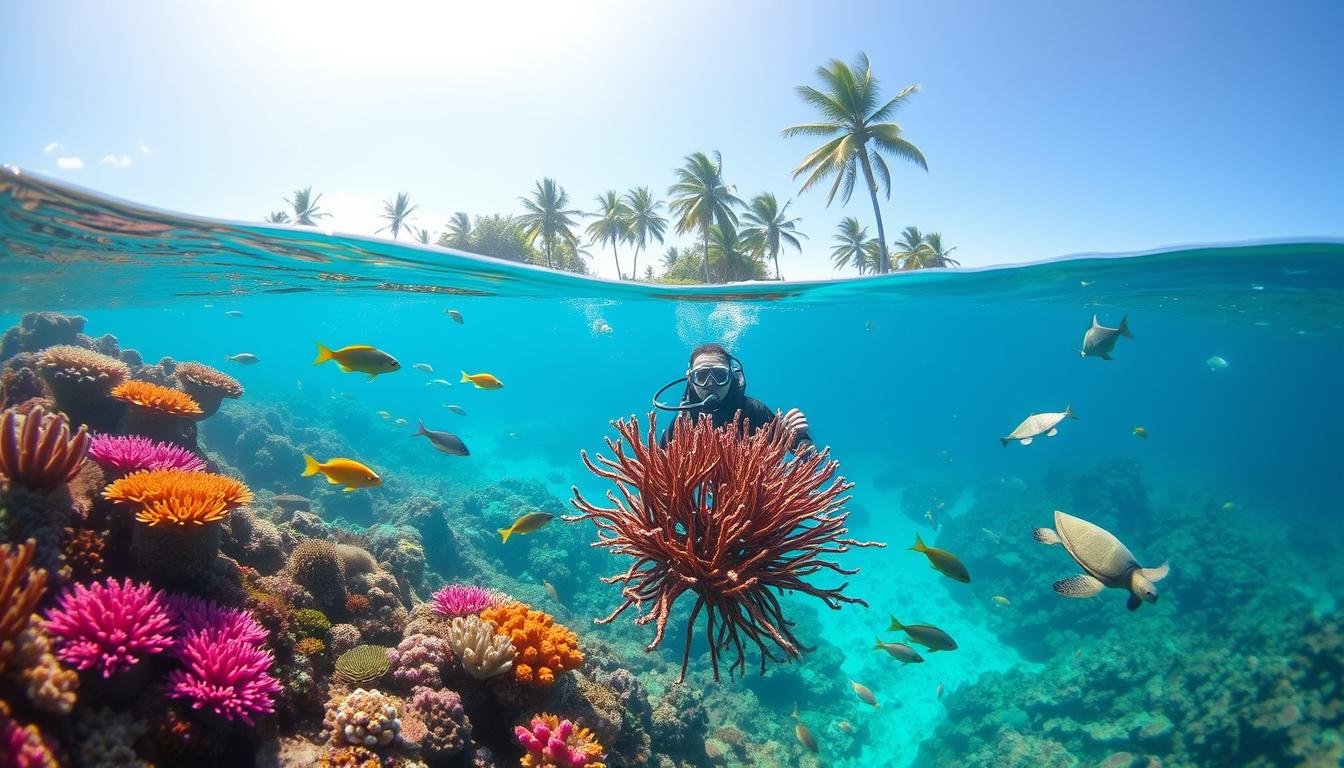
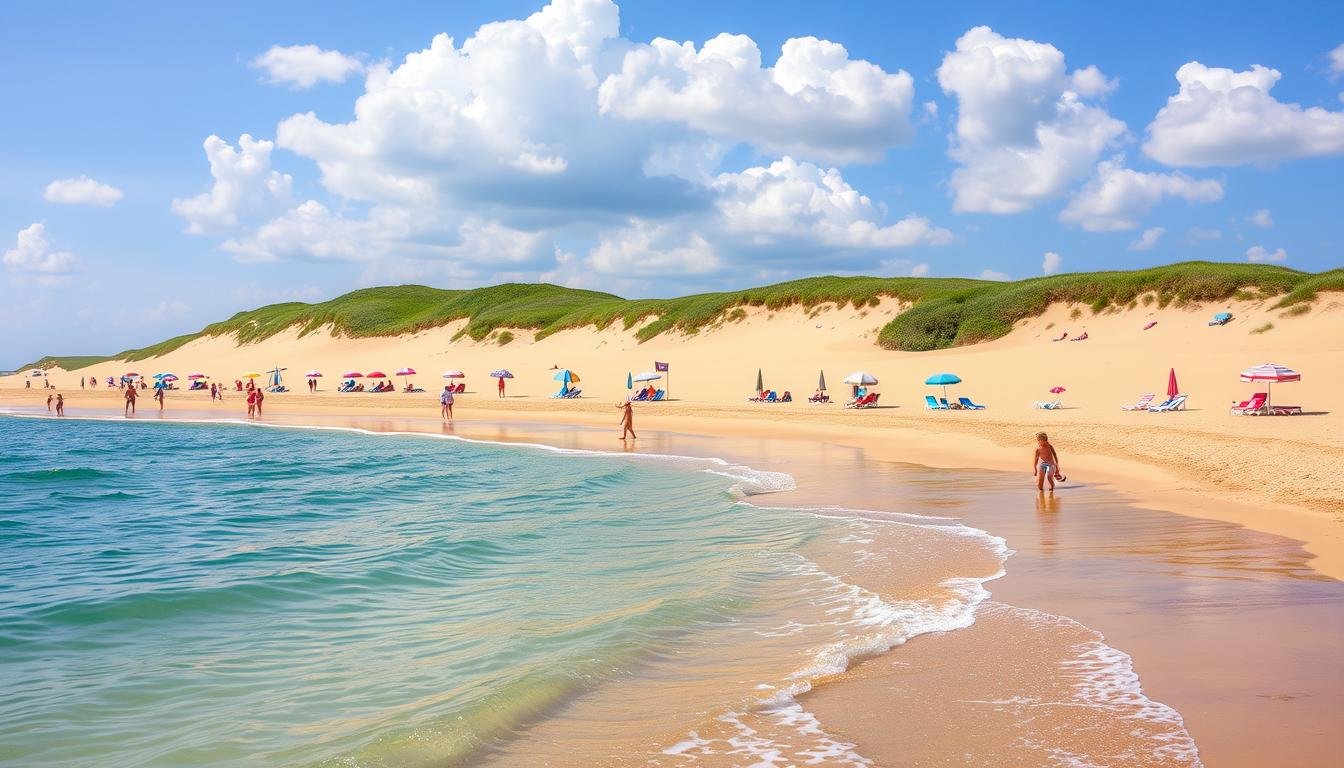
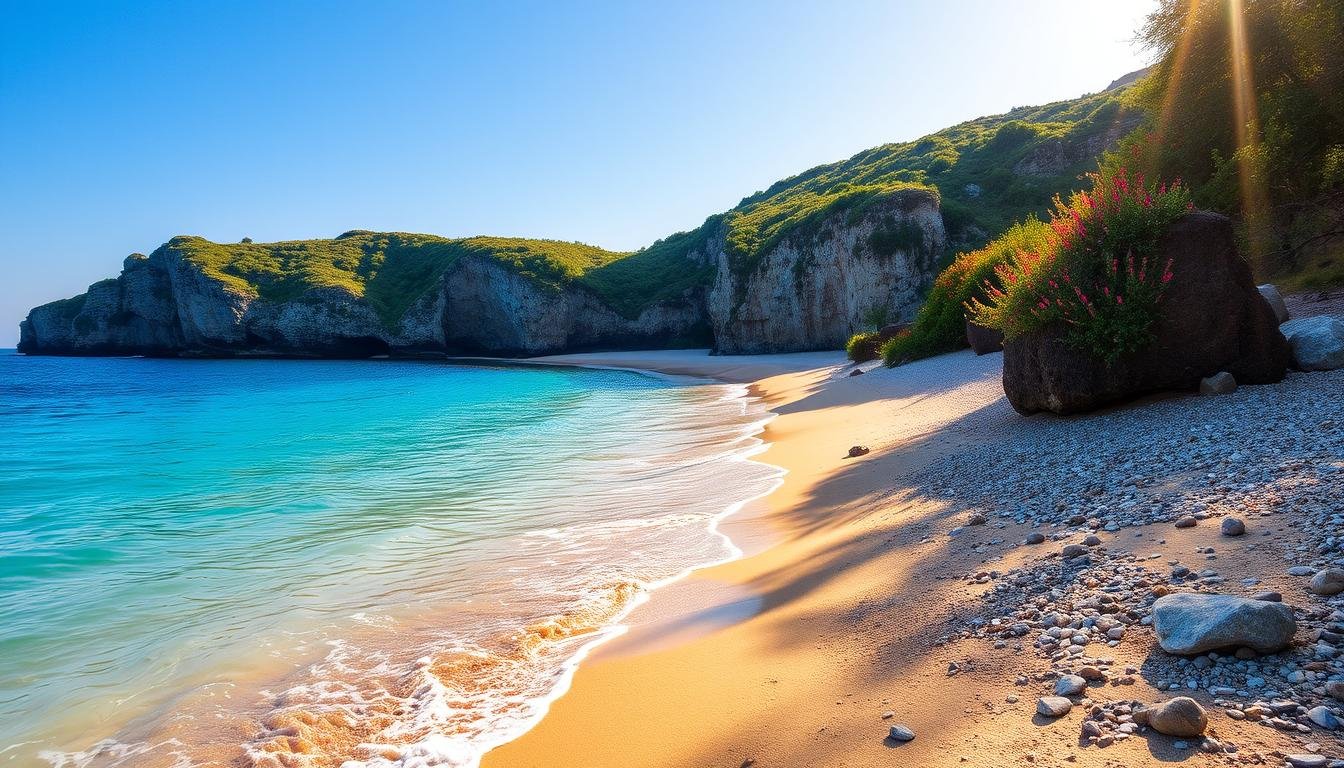
Leave a Reply